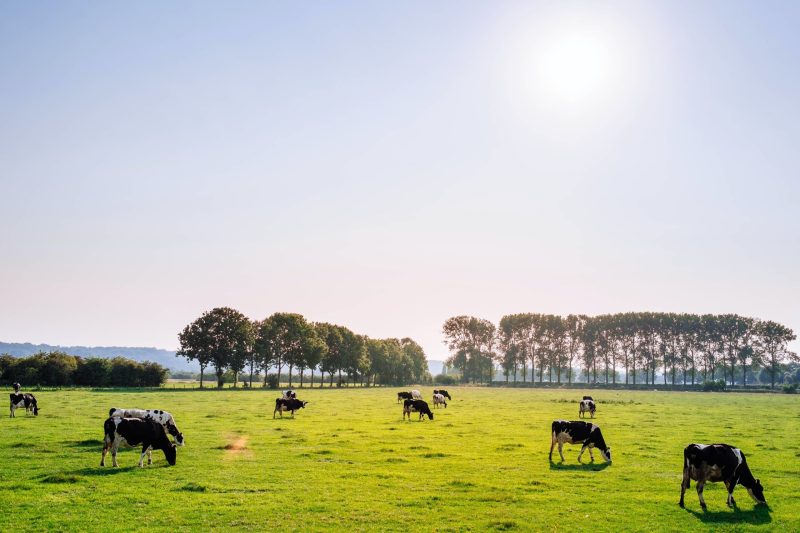President Biden’s climate commitments are important steps for our nation, and his focus on agriculture — the sector responsible for 10 percent of U.S. greenhouse gas emissions — is critical. But notwithstanding broad enthusiasm for farm-based climate action, the new administration is overlooking two realities: firstly, how farmers and ranchers think, and secondly, the sharpest government tool available for building soil carbon.
We are concerned that these realities are being ignored as the Growing Climate Solutions Act, which would involve the federal government in carbon market implementation, recently passed the U.S. Senate. If passed by the House, this bill would insert the federal government into the process of determining when and how U.S. producers can sell carbon credits on the open market, whether to corporations offsetting their greenhouse gas emissions or to private consumers who, for instance, might want to offset their air travel.
In this piece, we highlight the problem with this approach and argue that carbon market development should be left to the private sector.To start at the center of the issue, climate action is not a top priority for American farmers and ranchers. In fact, most producers remain skeptical that climate change is human-caused. Yet in our study of California ranchers’ perspectives on carbon markets, we found that ranchers had a strong interest in getting paid to improve soil health. Soil health is how well soils function as a living system, including supporting animal and plant productivity, water quality and long-term resilience. Practices like rotational grazing, conservation tillage and cover crops can in some contexts support soil health and also draw down carbon from the atmosphere.
Ranchers know that investing in soil health — particularly preventing soil erosion — is a proven way to boost their bottom lines and preserve their lands for the next generation. With YouTube farmer influencers like Greg Judy preaching soil health across the social media airwaves, more and more farmers are learning about these conservation practices. The root of their interest is not carbon cycling, but building the health of their soils to prevent erosion and improve their farms’ long-term profitability. Still, a minority of producers use these best practices because they require upfront capital and operational changes that can be risky in the short term. Like any business owner, farmers and ranchers must weigh these economic factors and make a calculated call.
The ranchers in our study were intrigued by the possibility of getting paid to steward their soils, yet they also raised goliath questions. How much will producers realistically get paid per acre for participating in the carbon market? Is the market’s approach scientifically rigorous? Is there funding available to offset the cost of adopting new sustainable practices? Without clear answers to these questions, producers are reluctant to take on the financial risk and time burden of shifting practices to join a carbon market.
Indeed, ranchers’ skepticism about carbon markets is justified. While working lands-focused carbon markets have become a hot item, they face steep challenges and may be much less effective at mitigating climate change than advocates propose. The science is still emerging on how long sequestered carbon stays in the soil. The costs and labor needed for rigorous monitoring and verification of soil carbon can be prohibitive to farmers and ranchers, and the U.S. government has yet to commit funding to offset those costs for farmers. On top of that, on the vast rangelands of the American West, soil carbon can be especially difficult to build and keep in the ground.
It’s no wonder ranchers are skeptical to dive in before the science and economics are clear. Asking them to commit before these unknowns are answered is unfair and even risky to producers. So with strong interest from agricultural producers in the income potential of carbon markets, but more research and development needed, what should the federal government do?
Each sector has a unique role to play in building working lands’ soil carbon. We suggest that carbon market development should be left to the private sector, given the still-emerging science and technologies for monitoring and verification of carbon additionality.
In parallel, the federal government could play a complementary and game-changing role by expanding existing USDA soil conservation programs. These programs are known to effectively support soil health but are underfunded, and include the Environmental Quality Incentives Program (EQIP), the Conservation Stewardship Program (CSP), the Grassland Reserve Program (GRP) and the Agricultural Conservation Easement Program (ACEP). Given that only 40% of farmers and ranchers who apply to EQIP and CSP in California receive funding, expanding the capacity of existing soil programs could rapidly fill this gap between conservation financing supply and demand.
Carbon markets place significant up-front risk on farmers and ranchers as they invest in new practices, risk which is offset by Farm Bill-funded programs that help producers finance and manage soil health. This service will become increasingly critical as we ask more than ever of our nation’s producers (e.g., increase yields, support habitat, protect water quality, increase soil carbon). At the same time, the Biden administration should continue investing in soil science and carbon monitoring research through partners like the Foundation for Food & Agriculture Research, which unlocks the private sector’s capacity to build effective carbon markets.
When engaging the agricultural community, the Biden administration should consider farmers’ and ranchers’ beliefs. While producers are skeptical about anthropogenic climate change, they are passionate about protecting soil and natural resources. To maximize traction with landowners, federal soil carbon programs should be framed in terms of protecting soil health, preventing erosion and passing the farm or ranch on in good condition to the next generation. These messages will resonate with farmers and ranchers — the stewards of vast swaths of the U.S. — much more than zealous proposals for addressing global climate change.
The authors’ recent study on working lands carbon markets can be found here.
